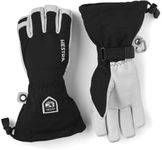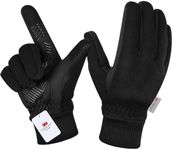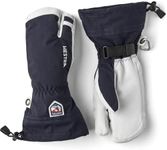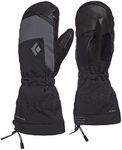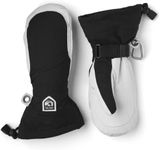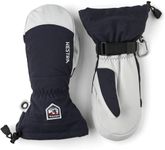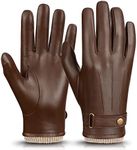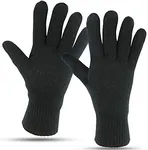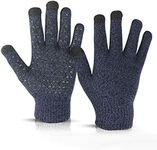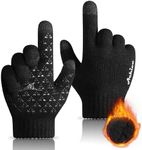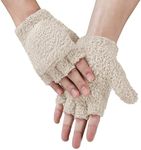Buying Guide for the Best Thermal Gloves
When it comes to picking the right thermal gloves, it's important to consider several key factors to ensure you get the best fit for your needs. Thermal gloves are designed to keep your hands warm in cold conditions, but different gloves offer varying levels of warmth, dexterity, and protection. Understanding the key specifications will help you make an informed decision and choose the perfect pair for your activities, whether it's for outdoor sports, work, or casual use.Insulation MaterialInsulation material is what keeps your hands warm by trapping heat inside the gloves. Common materials include Thinsulate, down, and synthetic fibers. Thinsulate is lightweight and provides good warmth without bulk, making it ideal for activities requiring dexterity. Down offers excellent warmth but can lose its insulating properties when wet, so it's best for dry conditions. Synthetic fibers are versatile and maintain warmth even when wet, making them suitable for a variety of conditions. Choose the insulation material based on the level of warmth you need and the conditions you'll be facing.
WaterproofingWaterproofing is crucial if you'll be using the gloves in wet or snowy conditions. Waterproof gloves have a membrane or coating that prevents water from penetrating while allowing moisture from sweat to escape. Look for gloves with materials like Gore-Tex or other waterproof membranes. If you expect to be in wet conditions frequently, prioritize waterproof gloves to keep your hands dry and warm. For dry, cold environments, water resistance may be sufficient.
BreathabilityBreathability refers to the glove's ability to allow moisture from sweat to escape, preventing your hands from becoming clammy. This is important for comfort, especially during high-intensity activities. Gloves with good breathability often use materials like Gore-Tex or other breathable membranes. If you plan to engage in activities that cause you to sweat, such as skiing or hiking, prioritize gloves with high breathability to maintain comfort.
DexterityDexterity is the measure of how easily you can move your fingers and perform tasks while wearing the gloves. Thicker gloves with more insulation may reduce dexterity, while thinner gloves offer better finger movement. Consider the activities you'll be doing; if you need to handle tools, operate a phone, or perform precise tasks, look for gloves that balance warmth with dexterity. For less demanding activities, thicker gloves may be acceptable.
Fit and SizingFit and sizing are crucial for comfort and effectiveness. Gloves that are too tight can restrict blood flow and reduce warmth, while gloves that are too loose can let cold air in. Measure your hand size and refer to the manufacturer's sizing chart to find the right fit. Consider whether you prefer a snug fit for better dexterity or a looser fit for layering with liner gloves. The right fit ensures maximum warmth and comfort.
DurabilityDurability refers to how well the gloves can withstand wear and tear. Look for gloves made with high-quality materials and reinforced areas, such as the palms and fingertips, which are prone to abrasion. If you plan to use the gloves for demanding activities like mountaineering or construction, prioritize durability to ensure they last longer. For casual use, durability may be less critical, but it's still worth considering.
Touchscreen CompatibilityTouchscreen compatibility allows you to use your smartphone or other touchscreen devices without removing your gloves. This feature is achieved through conductive materials in the fingertips. If you frequently use your phone in cold conditions, look for gloves with touchscreen-compatible fingertips. This feature is especially useful for staying connected and accessing information on the go without exposing your hands to the cold.
